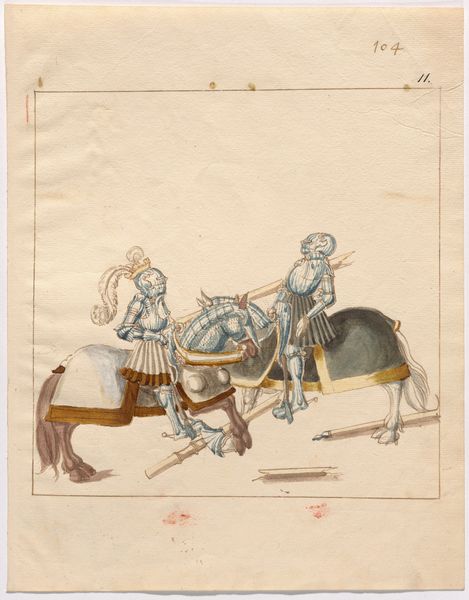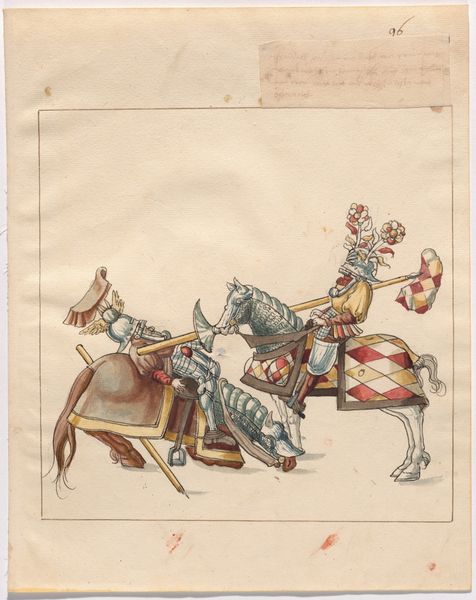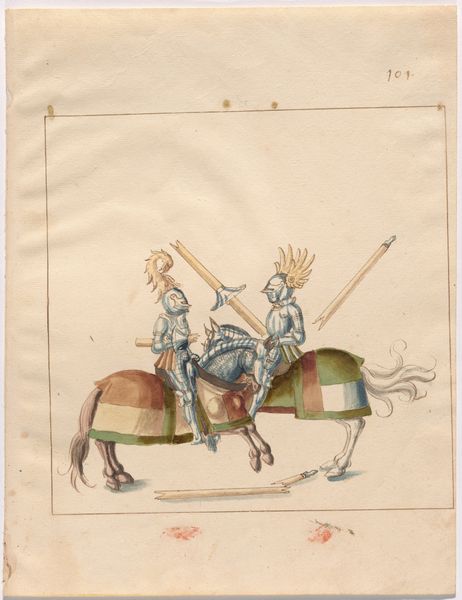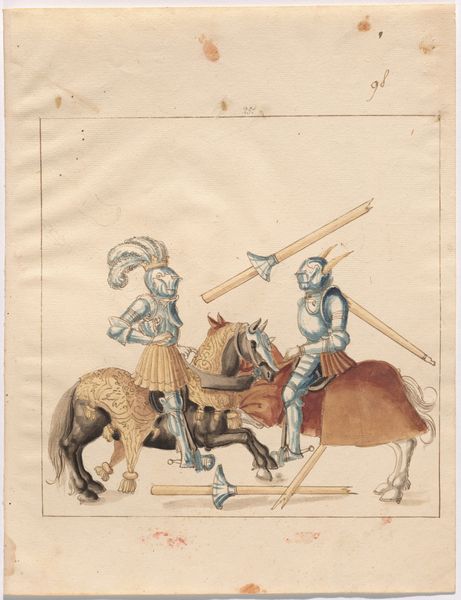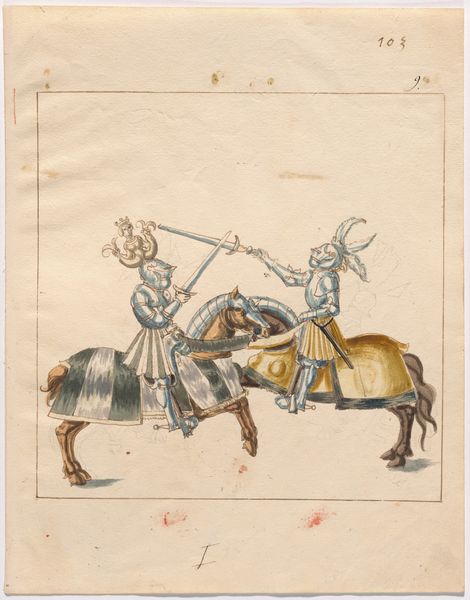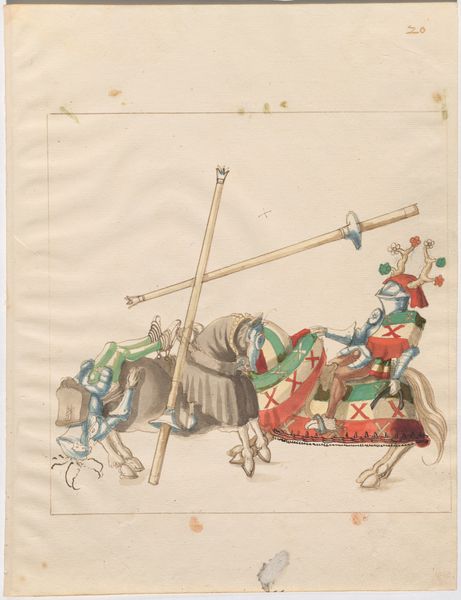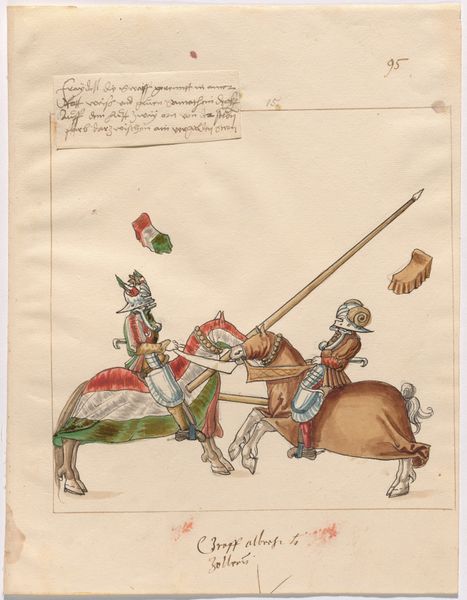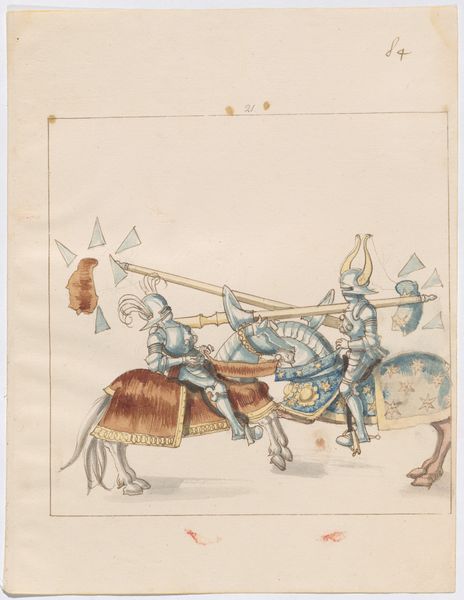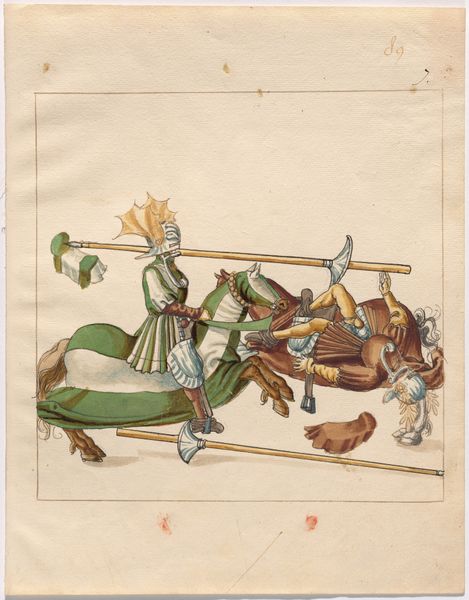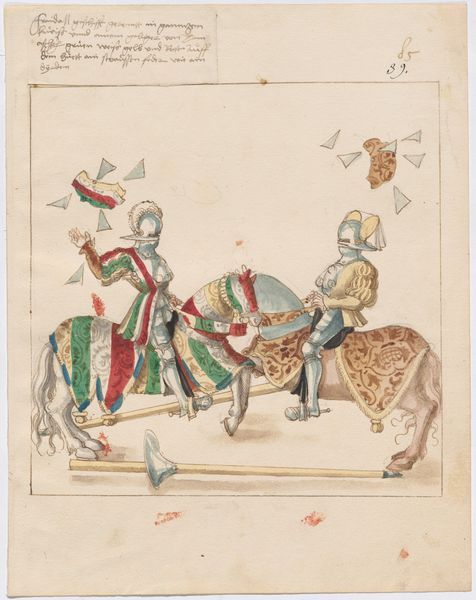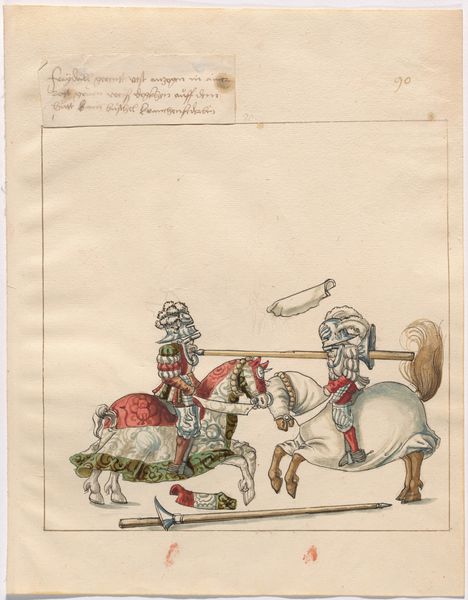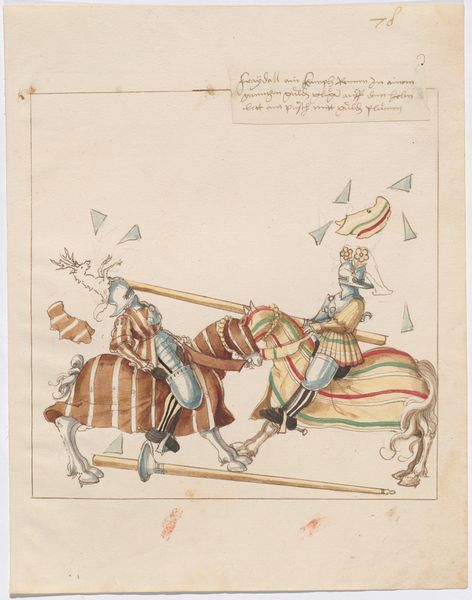
Mock Joust of War with Flying Shields and Without Bevors c. 1512 - 1515
0:00
0:00
drawing, coloured-pencil, watercolor
#
drawing
#
coloured-pencil
#
figuration
#
11_renaissance
#
watercolor
#
coloured pencil
#
watercolour illustration
#
history-painting
#
academic-art
#
miniature
Dimensions: sheet: 33.5 × 26.4 cm (13 3/16 × 10 3/8 in.)
Copyright: National Gallery of Art: CC0 1.0
Curator: This is a watercolor and colored-pencil drawing from around 1512 to 1515, titled "Mock Joust of War with Flying Shields and Without Bevors." The artist, as far as we know, remains anonymous. It presents two mounted knights preparing for combat, lances ready, though with an odd absence of crucial armor. Editor: It strikes me immediately as theatrical. There's a whimsical quality to it, despite the subject matter. The colors are bright, the figures somewhat doll-like, and the floating shields add to the feeling that this isn't meant to be taken entirely seriously. Curator: Absolutely. The "mock" in the title is crucial. Jousts, of course, were displays of prowess and power, heavily steeped in social ritual. To depict it "without bevors"—the crucial face protection on a helmet—and with these… levitating shields, highlights a fascinating tension between pageantry and practicality. The image lacks an element of gravity or a more careful approach to detail that defines more ‘serious’ renderings of this event in other artistic forms like tapestries or altarpieces for example. Editor: I'm drawn to that playful element. The choice to depict these knights almost playfully disrupts any glorification of warfare we might expect. Instead, there's a critique embedded in the exaggeration and slight absurdity. We’re witnessing the aristocracy engaged in a dangerous sport, presented as theater rather than battlefield reality. And that affects the understanding of who commissions and views the works of art; they need not take it seriously. Curator: Indeed. It’s quite possible this drawing served a specific social function within courtly life. These figures, poised between reality and representation, echo performances, and their impact within society may have been considerable despite that distance from seriousness. Editor: I'd love to know more about the context in which this image was created. Were these types of ‘mock’ jousts becoming more fashionable or culturally accepted? What does that signify? I wonder too, if there are any connotations relating to how individuals could avoid combat due to reasons surrounding identity? Curator: These are excellent questions that shed further light on how this imagery could act to solidify and reflect aspects within the lives of particular people throughout time. It encourages us to remember that all elements within it—not just the battles—operate within particular societies and contribute their understanding towards any given issue or theme in time through artistic representation. Editor: Yes, that's precisely what makes art like this so powerful – the conversation it sparks about history and us.
Comments
No comments
Be the first to comment and join the conversation on the ultimate creative platform.
